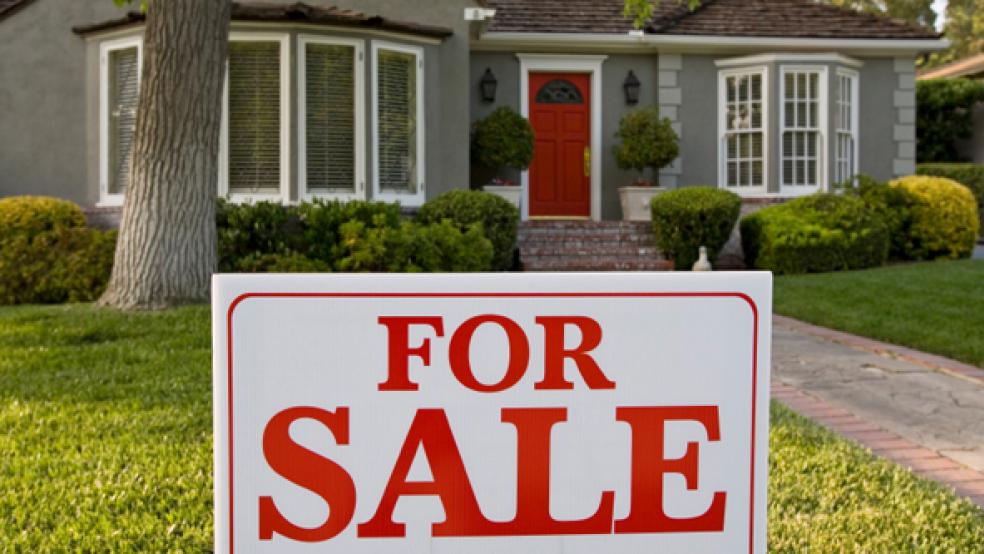It’s rare for the housing market these days to perform better than expected. But in August, existing home sales actually rose 7.7 percent, to a seasonally adjusted rate of 5.03 million homes, a five-month high, the National Association of Realtors said Wednesday. That’s still well below the 6-million level mark that economists say is needed in a healthy economy.
The current pace of sales is the fastest since early spring, but on par with the 18-month average. Sales are 18.6 percent higher than the 4.24 million unit level in August 2010. The sharp increase was primarily driven by a rise in foreclosures. Homes at risk of foreclosure made up 31 percent of sales, up from 29 percent in July.
Big banks like Bank of America have ramped up foreclosure activity and are pushing through thousands of delinquencies that had been delayed in the past year because of the “robo-signing” scandal. Experts say other large mortgage loan servicers will follow suit and accelerate sales of distressed homes.
“August’s gain is certainly good news for an economy that is teetering on the edge of recession,” said Celia Chen, economist with Moody’s Analytics. “Weak consumer confidence, slow job growth and tight credit are still constraining the demand for housing for those who intend to occupy the homes they purchase.”
Bargain hunters are also driving the gain in sales, Chen said. Investor purchases made up 22 percent of sales in August, compared with 18 percent in July. All cash deals, which are favored by investors, accounted for 29 percent of all sales.
Pent-up demand for homes and high affordability, though, will likely keep home sales strong for the remainder of the year, especially if the Federal Reserve reduces long-term interest rates. However, there is a risk that demand won’t be sustained, said Paul Dales, economist with Capital Economics. Sharp falls in equity prices and consumer confidence will likely spook potential home buyers. To avoid higher risks, more and more lenders are looking for a 20-percent down payment on a home, something many first-time home buyers can’t afford and many existing home buyers can’t extract from their current home, Dales said.
On top of that, the outlook has dimmed for home prices in the next few years. MacroMarkets LLC surveyed more than 100 housing experts, investors and economists who expect home prices to rise a mere 1.1 percent annually through 2015. Yale University professor and co-founder of the survey, Robert Shiller, said, “Markets and government institutions are visibly struggling to respond consistently to an unprecedented rash of crises and conflicts.”
The survey also asked experts if they thought further government action was necessary in the housing market in the upcoming 12 months. Seventy-three percent said it was i“highly likely,” while 57 percent said government action was “undesirable” and 49 percent said it was“unnecessary.”
To shrink the glut of foreclosed homes, the Obama administration has proposed selling tens of thousands of properties owned by government-sponsored entities (GSE) and renting them. Fannie Mae and Freddie Mac, along with the Federal Housing Administration (FHA), own approximately 250,000 homes; many are in some stage of foreclosure. The administration is also trying to expand a program that would allow home owners to refinance their mortgages, but many housing experts say it will do little to jumpstart the sluggish market.
Stan Humphries, chief economist with online real estate site Zillow.com, told a Senate Banking panel Tuesday that the government “should do no harm” in trying to speed up the housing market recovery. Past attempts to intervene with the homebuyer tax credits did not change the trajectory of the housing market, he said.
Humphries said that negative equity, or those homeowners “underwater,” as well as stubbornly high unemployment,will be the two fundamental factors that will plague the housing market over the next several years.
Robert Nielsen, chairman of the National Association of Home Builders, told the same Senate panel, “Local and small businesses should be the driving force behind the disposition of the…inventory, which will result in the creation of jobs and the stabilization of neighborhoods.”




